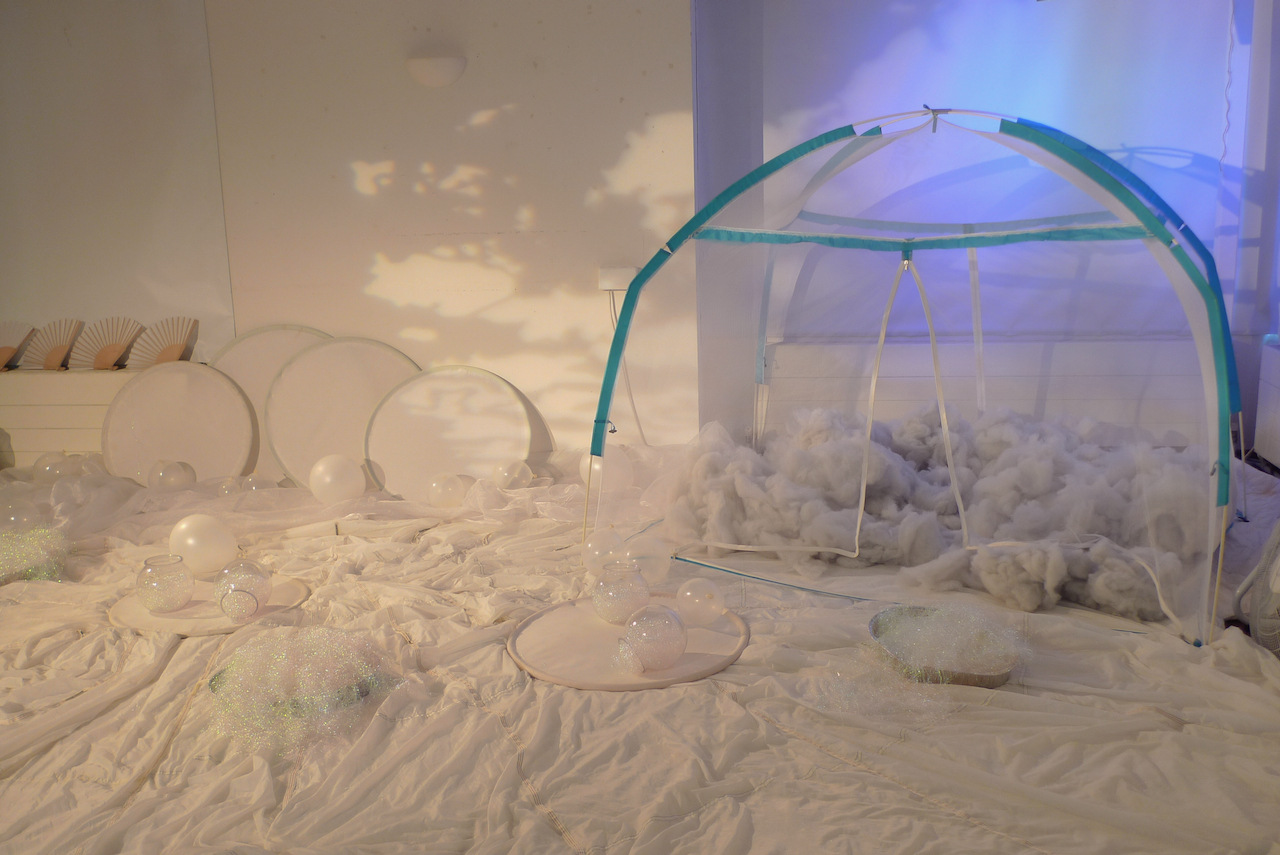Practical Advice and Building Tips
Building a visually stimulating environment, including textures and possibly sounds, creates a place within which a person can interact or simply 'be'.
It can can reinforce a particular theme and transport participants to new and exciting places they have never been, often motivating people to transcend the constraints of their
disabilities and become creators and advocates themselves. Whether the environment is created in a classroom, studio, or the corner of a bedroom, the following tips will give ideas and shortcuts for creating your own spaces which can be re-designed and re-used over and over again.
A fixing point in the middle of the
ceiling is very useful – can be a simple ‘eye’ or pulley mechanism, or simply a
strong hook.
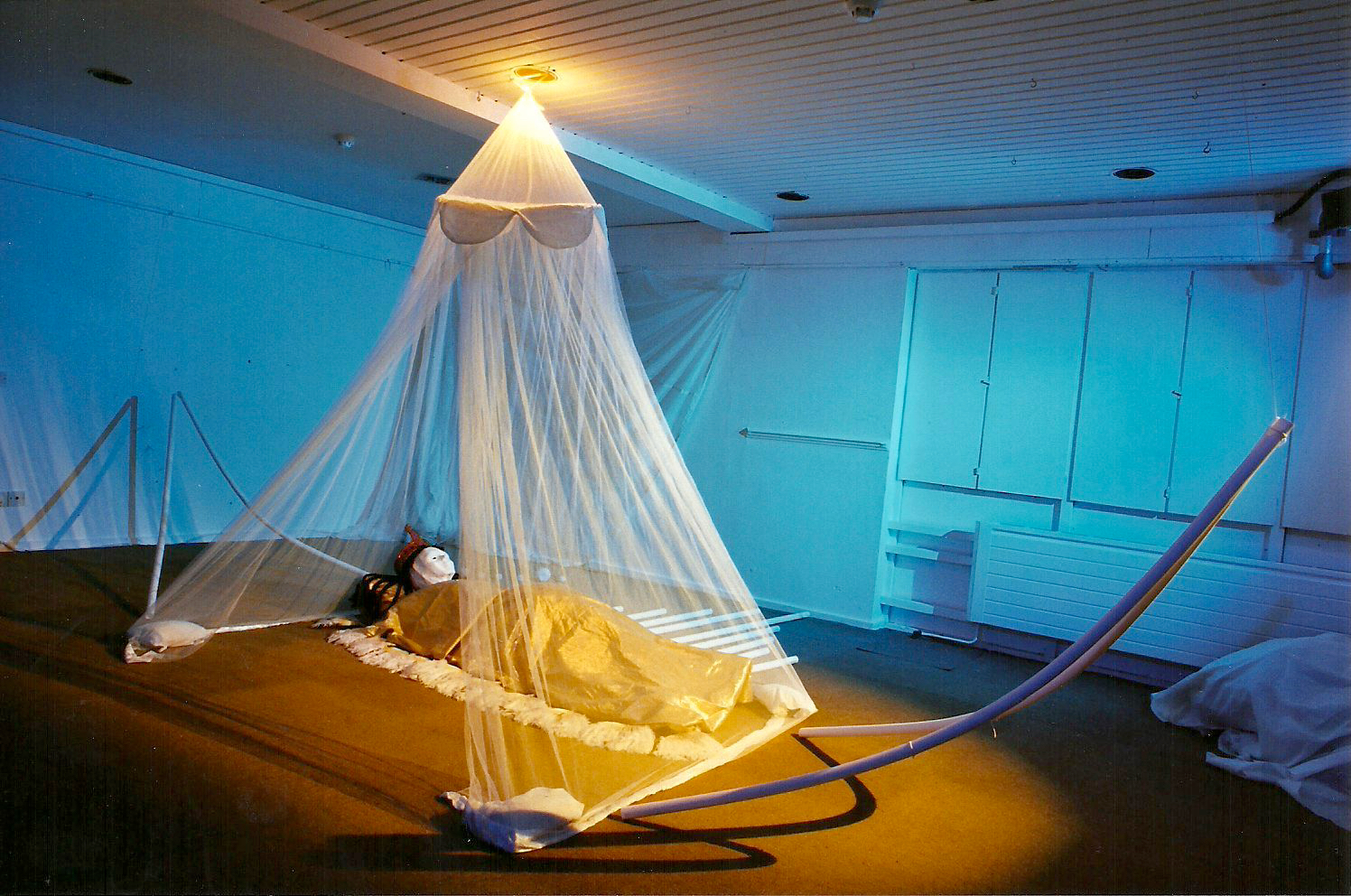
With carpet tiles you can make simple
fixing points on the floor by making a cardboard square with a string loop
attached, that slips under corners of
four tiles. Failing this, sandbags are useful for stabilising structures or
securing things to the floor. They can be bought from theatre suppliers, or
home-made by simply filling small plastic or cloth bags with sand.
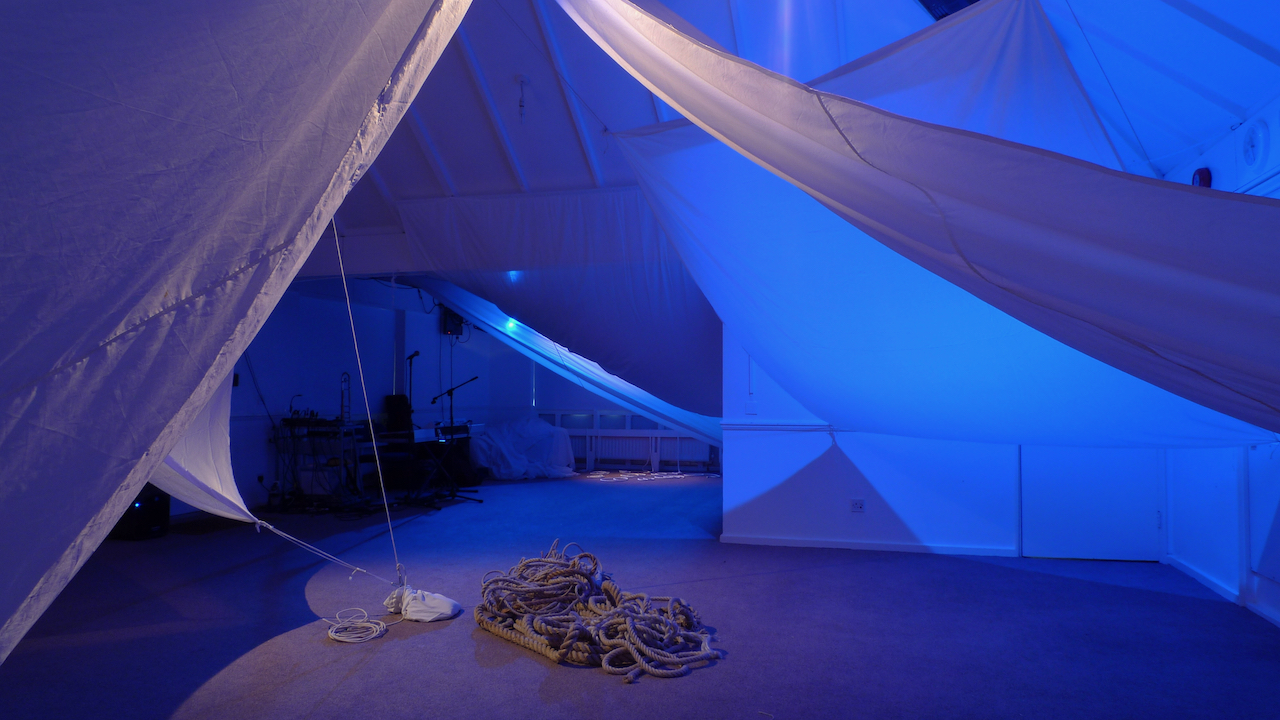
Lengths of thick bamboo make a useful
resource for building a variety of structures.
It is advisable to have various thicknesses and lengths, but you can build up these resources as you go
along
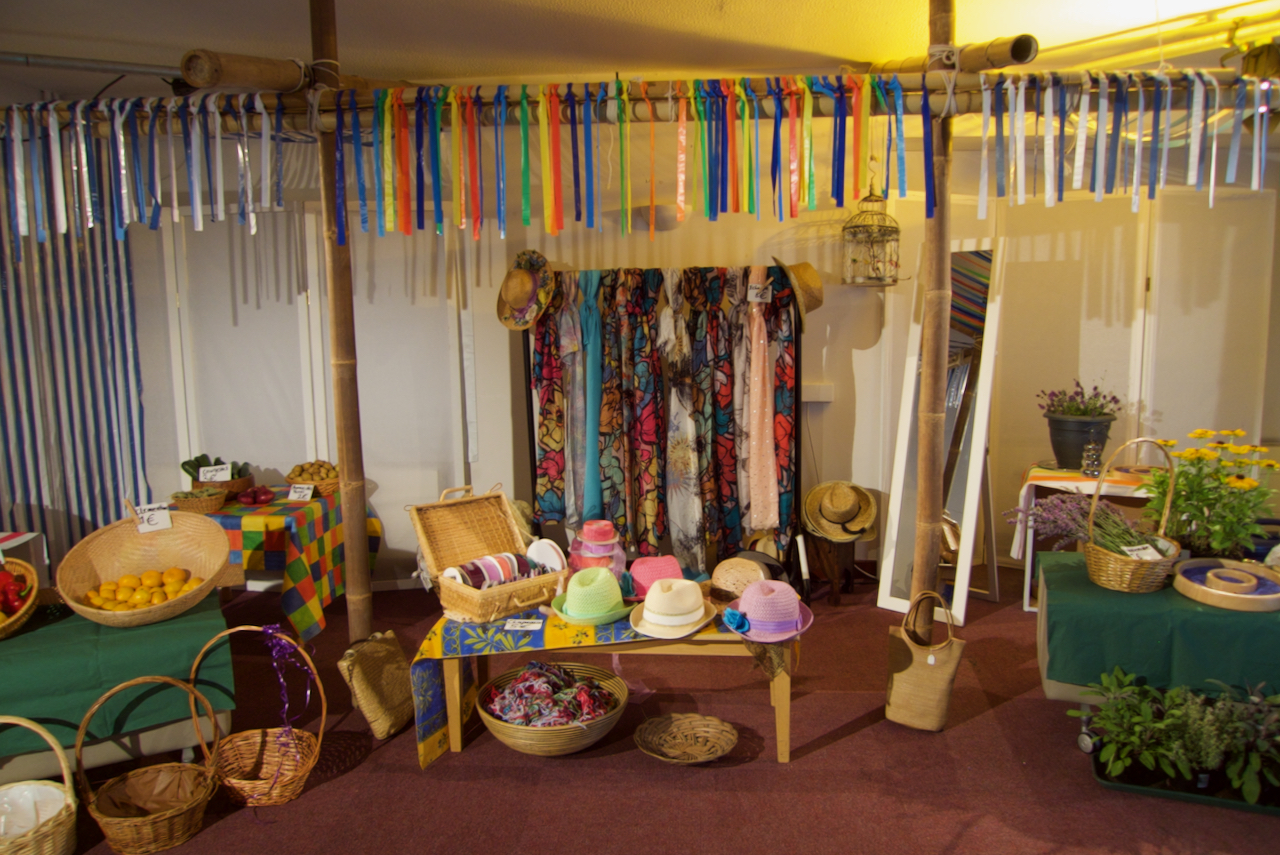
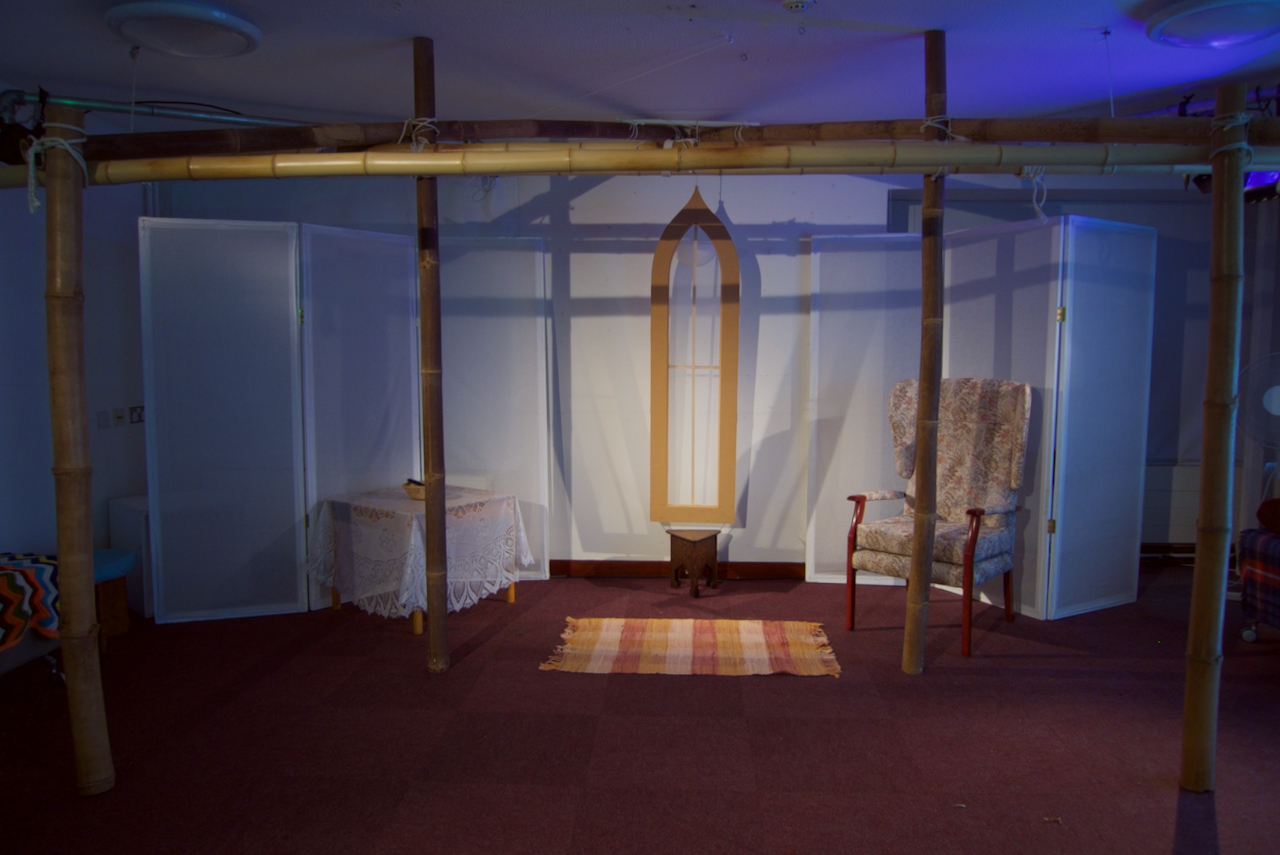

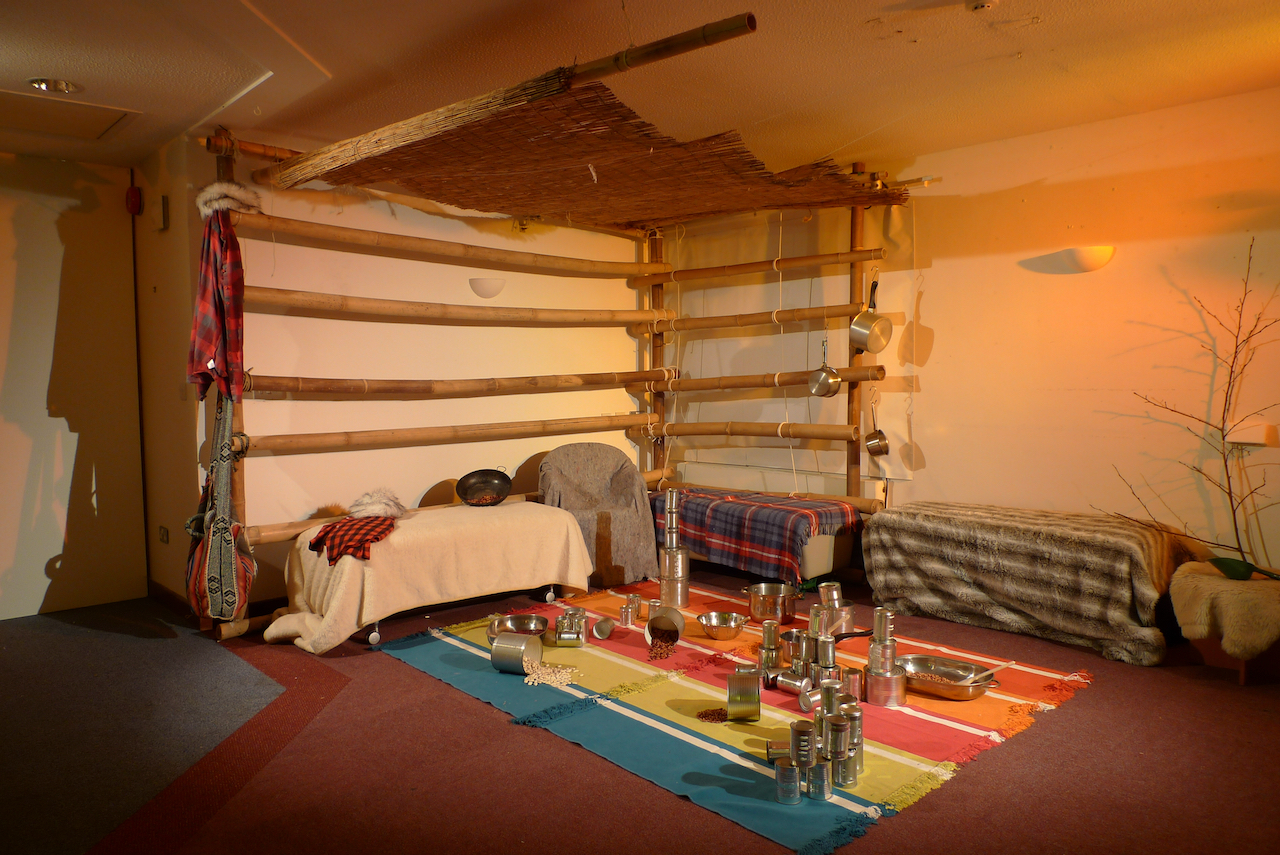
As you get accustomed to building in your chosen
space you will discover useful places for cup hooks (and stronger) to which you
can attach strings, cloths, accessories.
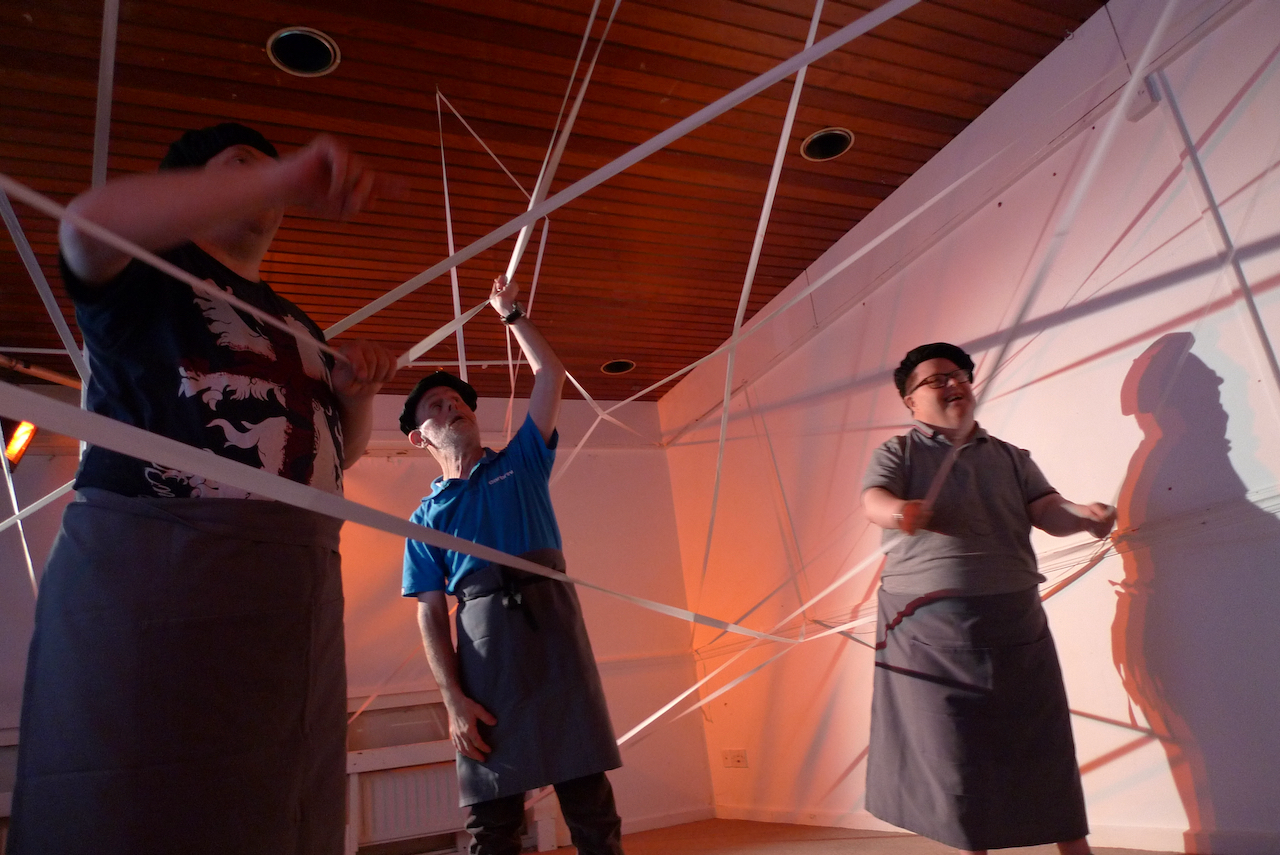
Tying knots in the corners of cloths enables
easy fixing over hooks and allows the cloth to hang in curves rather than
straight flat edges.

Hanging hoops allow attractive attachment of
several pieces of cloth from one point. This shows an erupting volcano, but it can simply be used as a device.
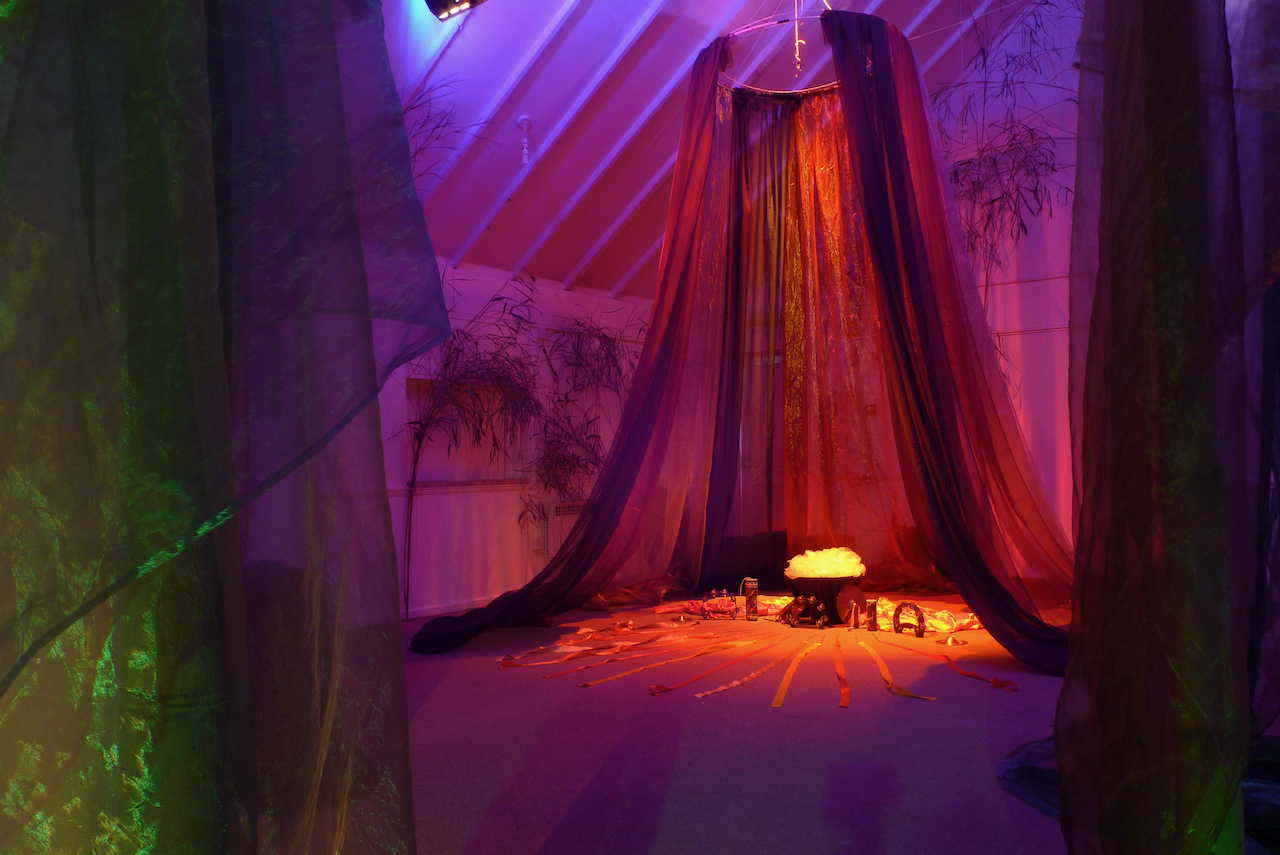
White plumbers tubing, cut into
different lengths and bent in hot water,
can be used as
building materials i.e. for boat, pyramid, other structures...
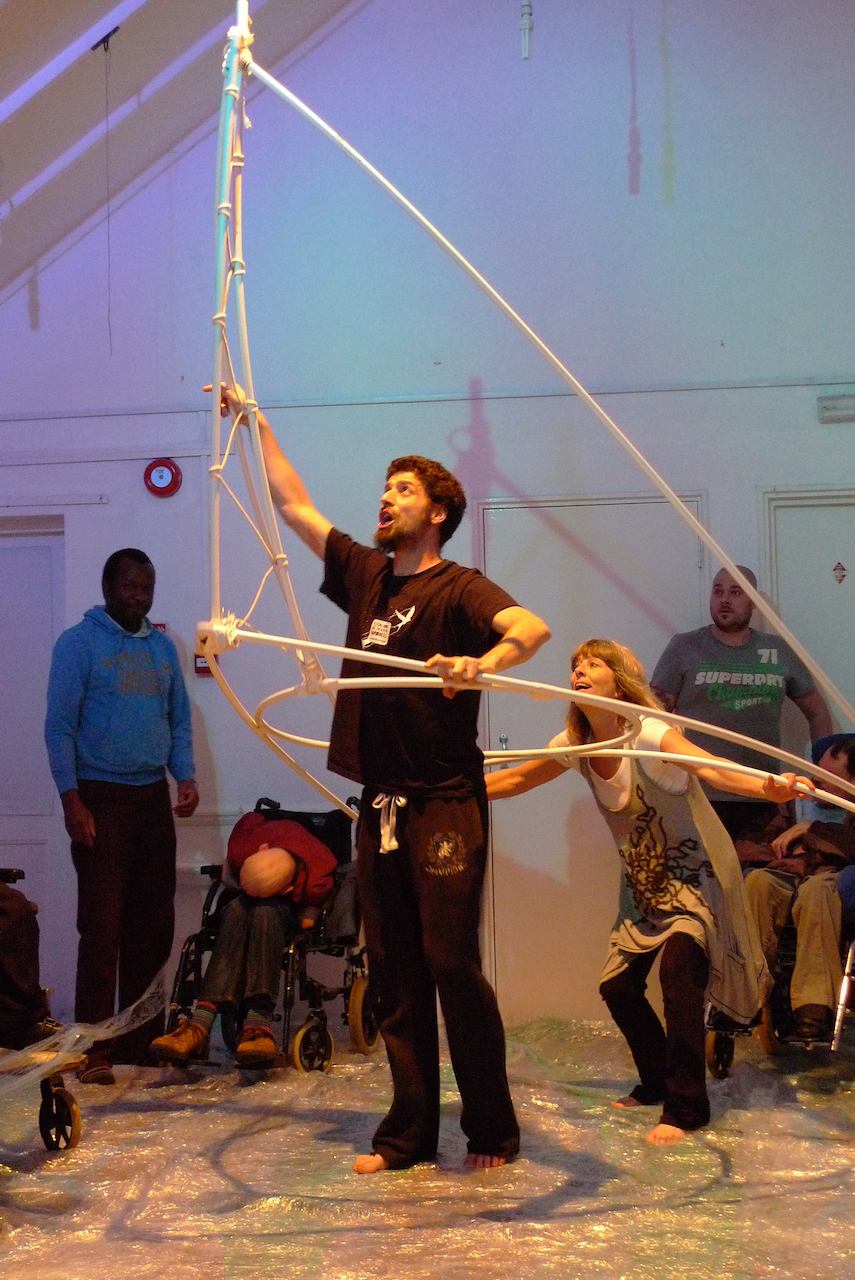
They can be simply secured by drilling holes in the ends and tying them together, offering straight lines or curves as required.
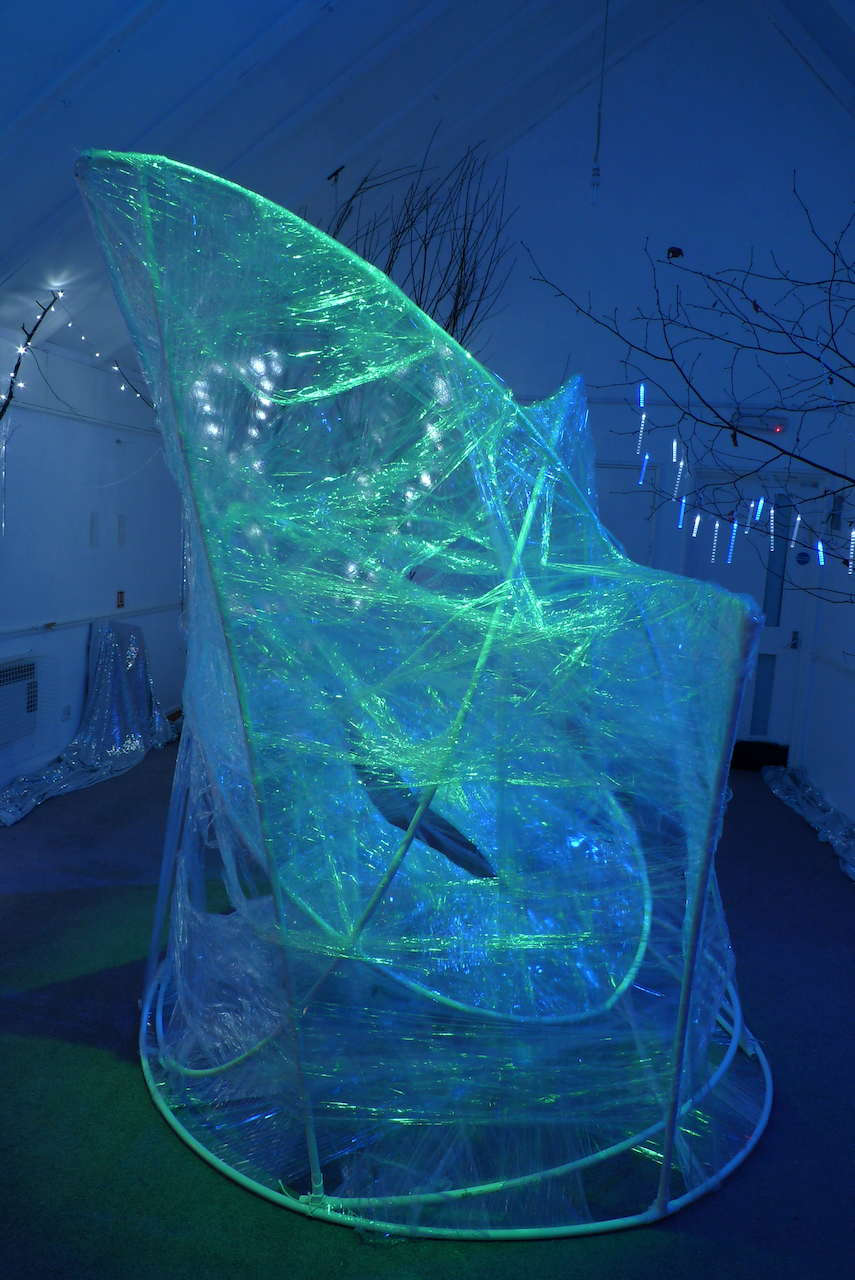
A cheap paddling pool, if dressed with
cloths and other natural materials, can be used to create a variety of features: Water – to make a magical pool, a small pump is
a useful acquisition as it adds other
qualities to a water feature – splashing, dripping sounds etc. Garden centres
will often lend ponds and water features. Also useful for containing other materials such as earth/sand/compost
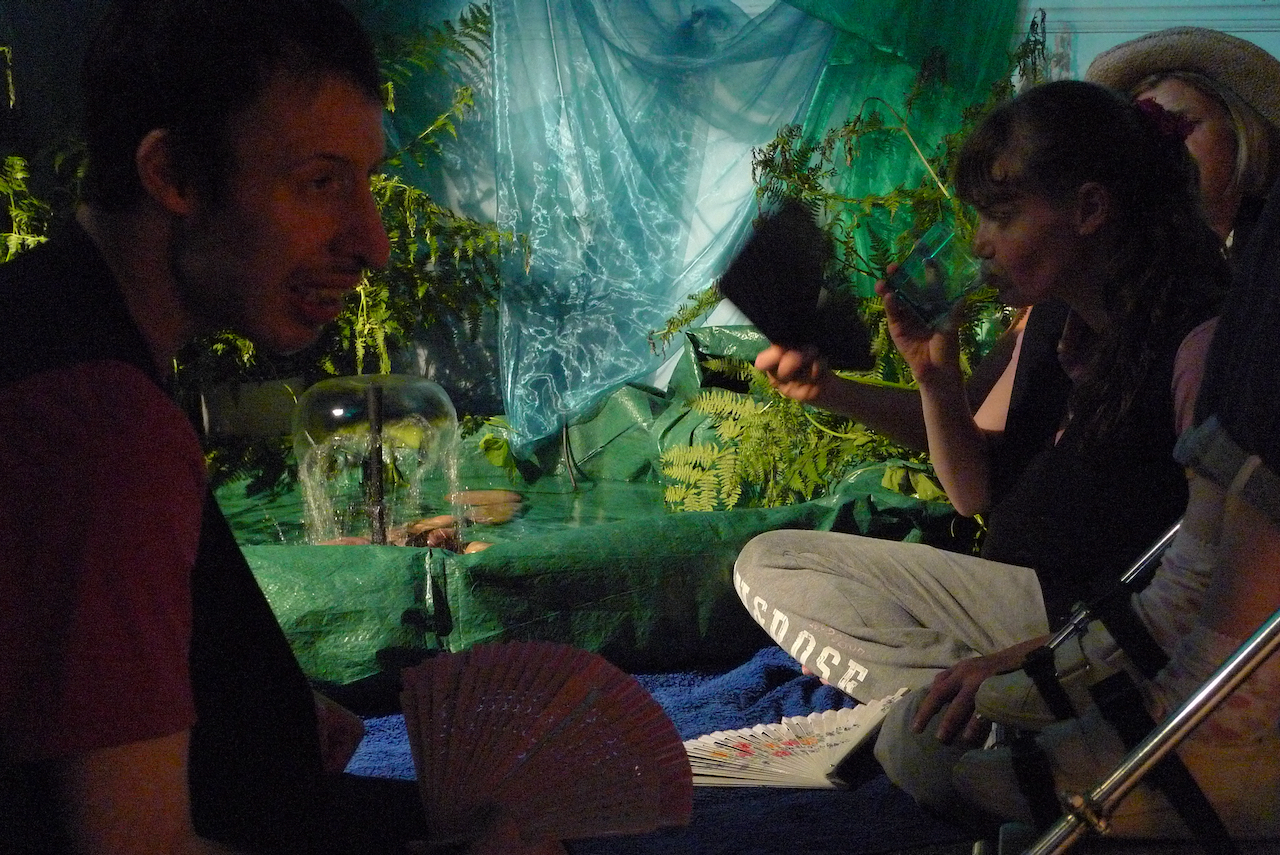
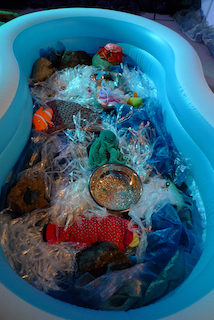
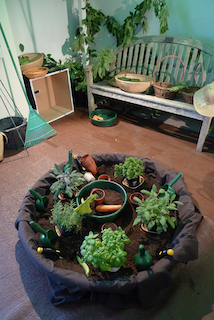
Fire – simply constructed with coloured
lighting gels over sparkling fairy lights, then surrounded by sticks and twigs.
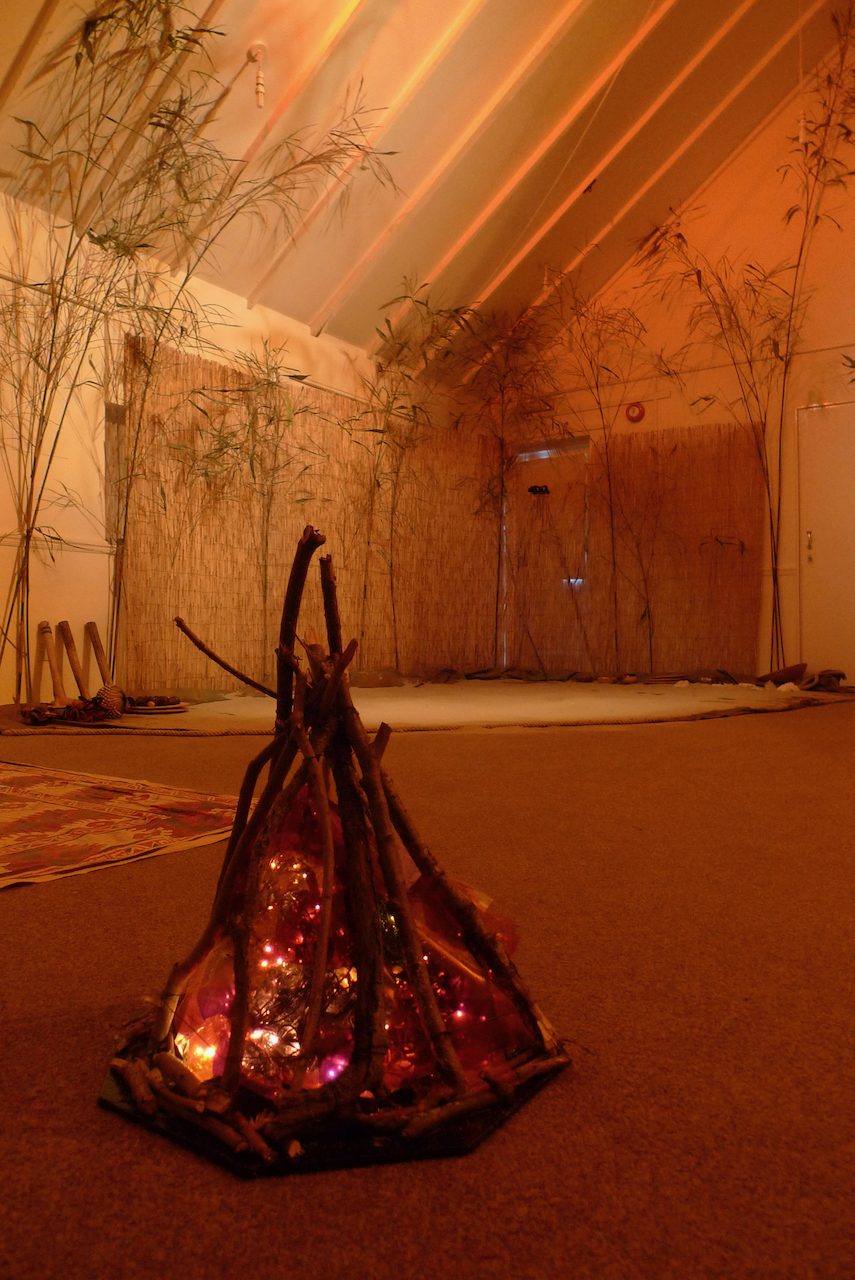
Quilts and pillows, covered with white cloths or a parachute are useful for creating a safe, soft area resembling snow or clouds.

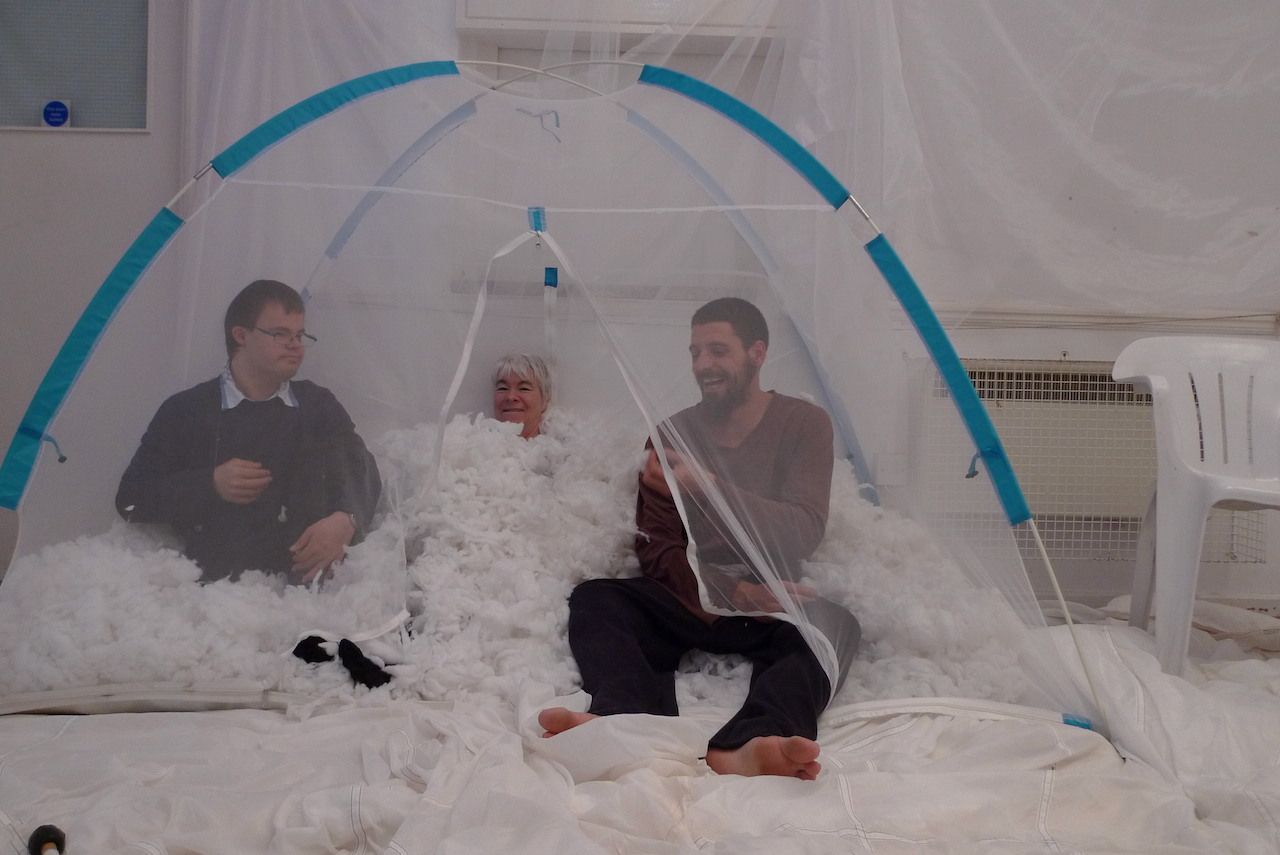
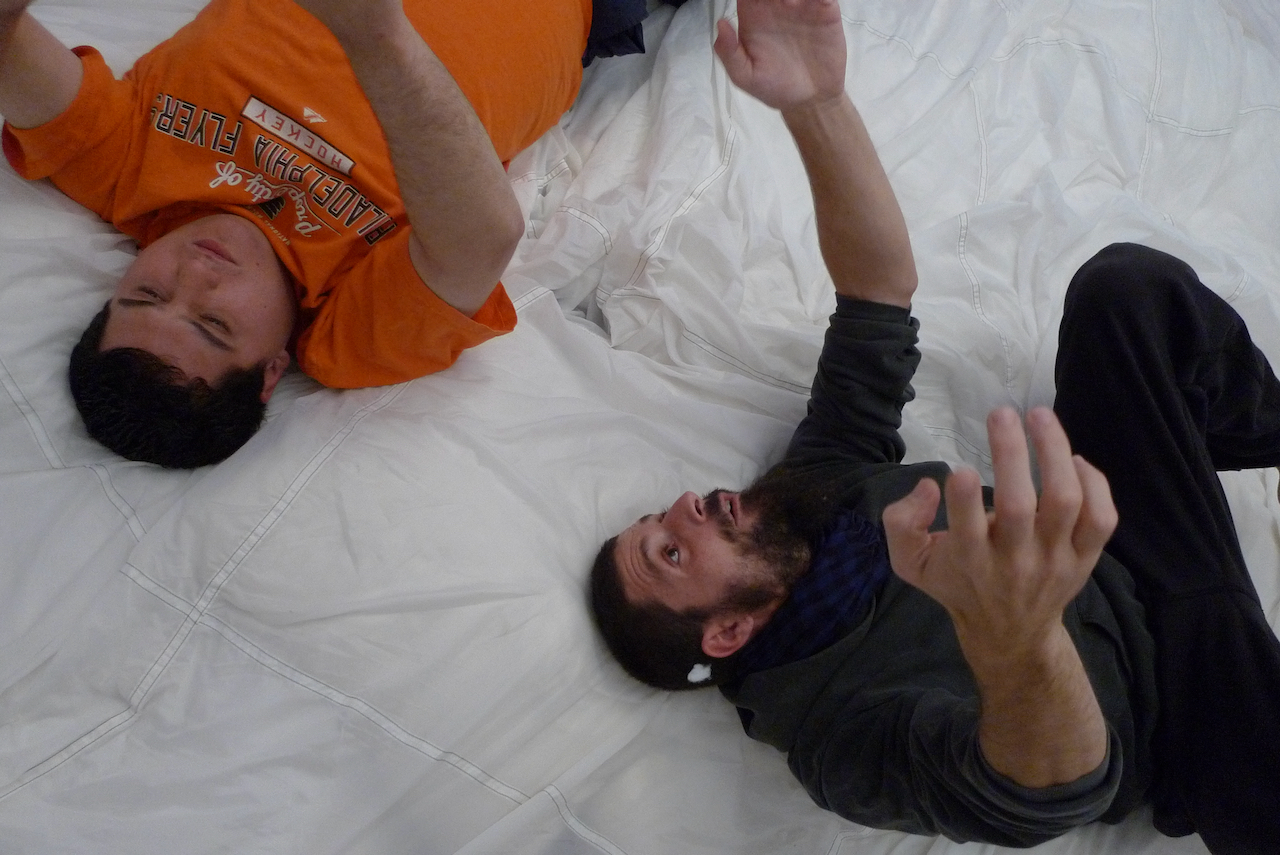
Parachutes are great for creating
environments quickly, particularly white ones as they can be lit different
colours.
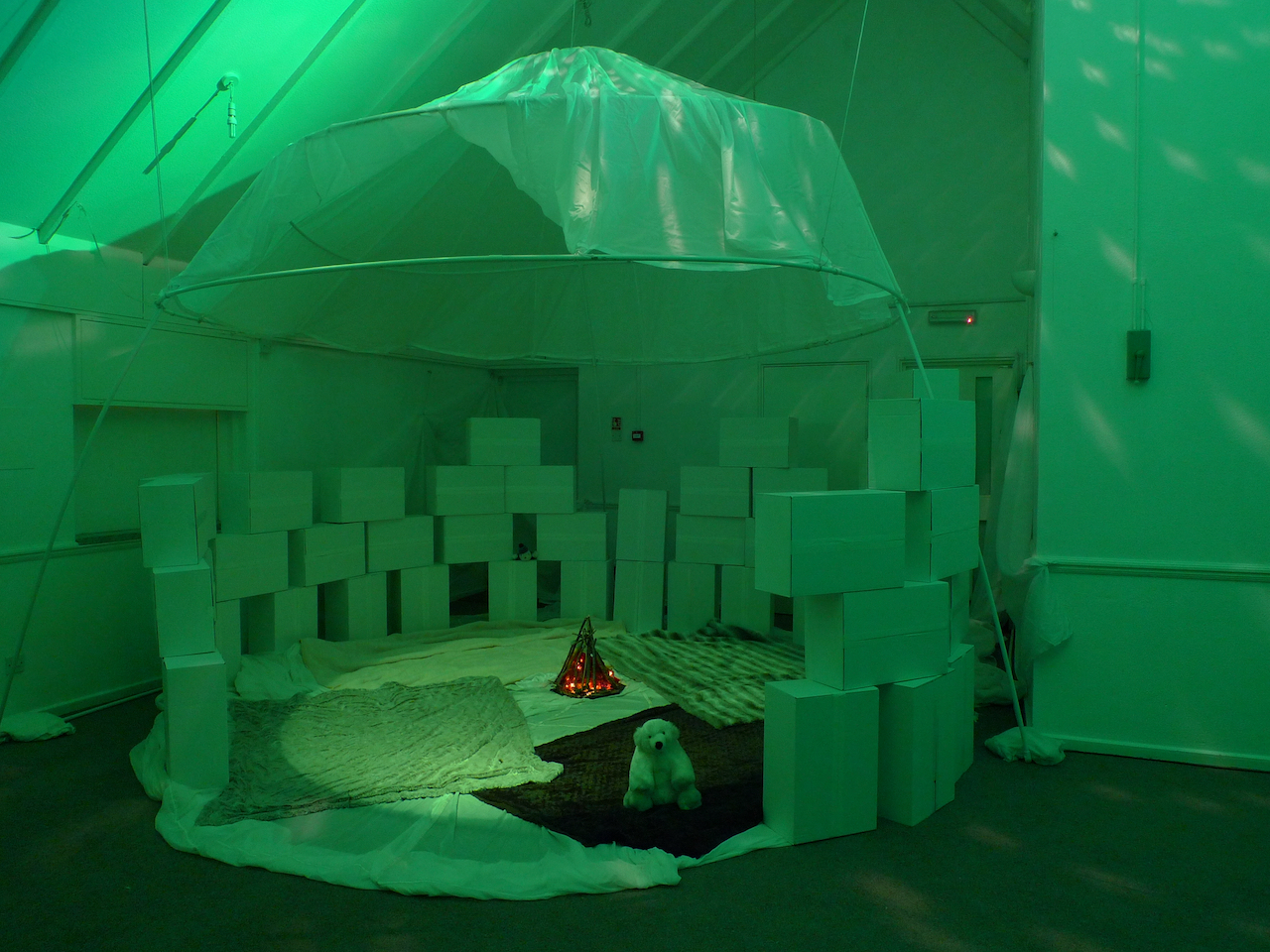
For filling corner spaces, attach middle of parachute to corner/ceiling and then drape sides out and above as required, either to make ‘cave’ or cover walls.

12’x12’ clear polythene dust sheets,
from local DIY stores, can create enclosed but translucent spaces i.e.
spaceships/submarines.
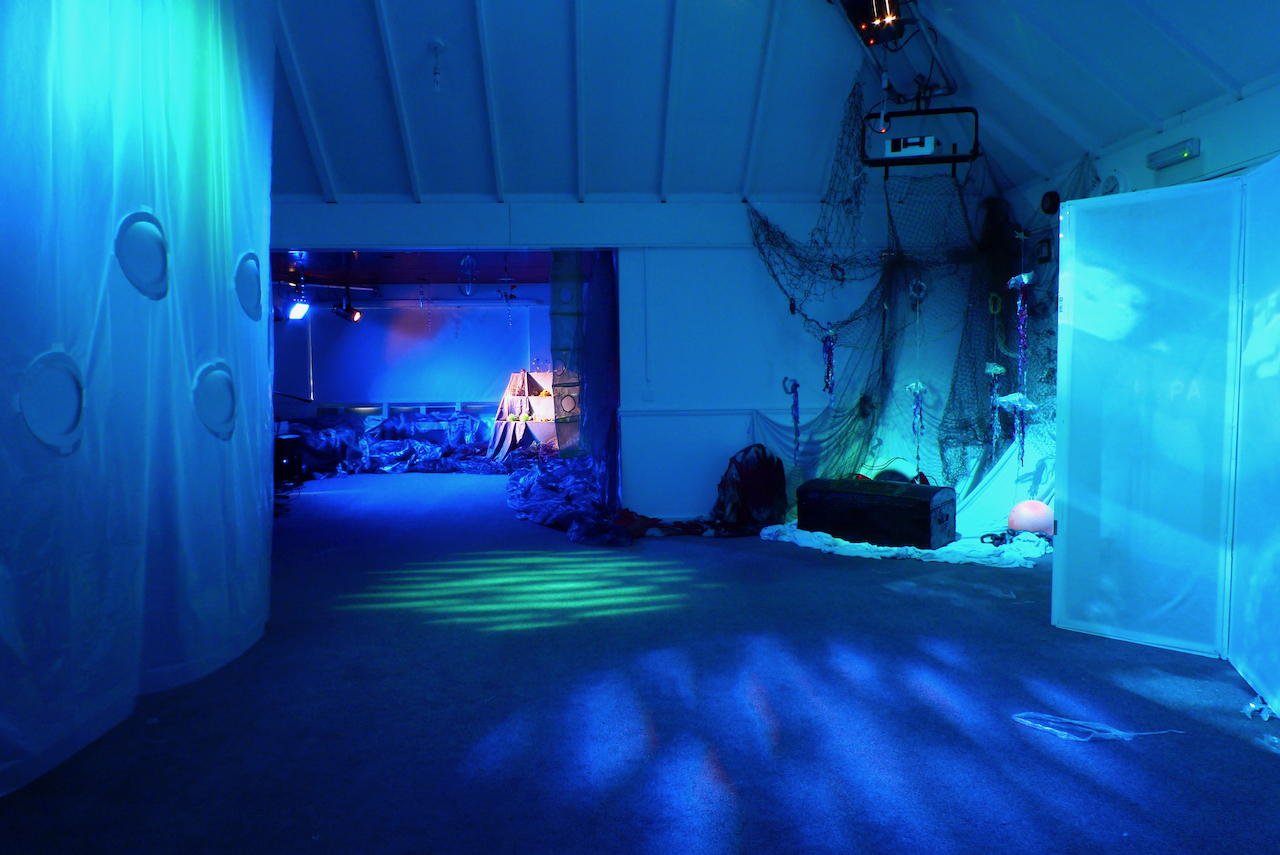
They can also be stripped to make ‘rainfall’, waterfalls, shimmering icicles, showers, or to accessorise props such as umbrellas
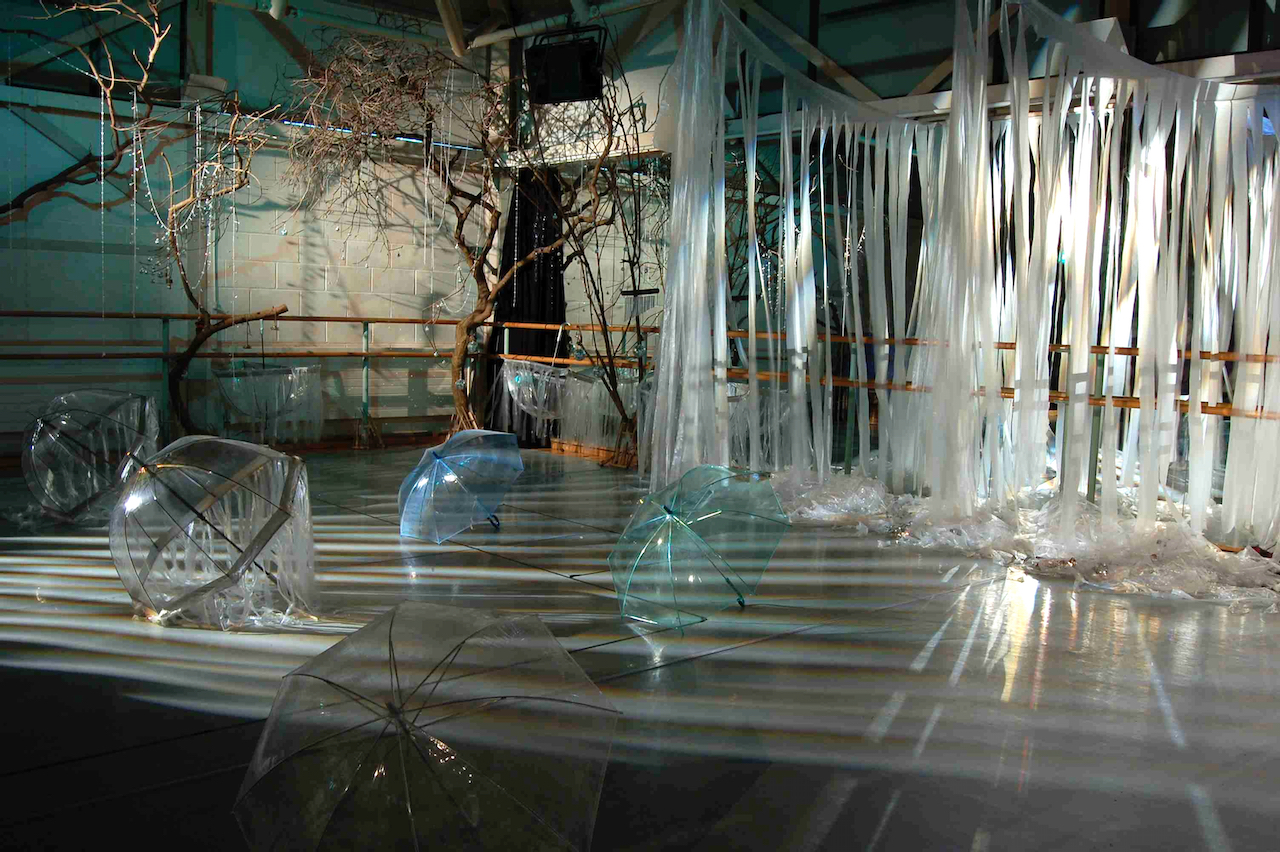
Camouflage nets are really useful for
creating 'natural' environments and can sometimes be acquired second-hand from army
sources
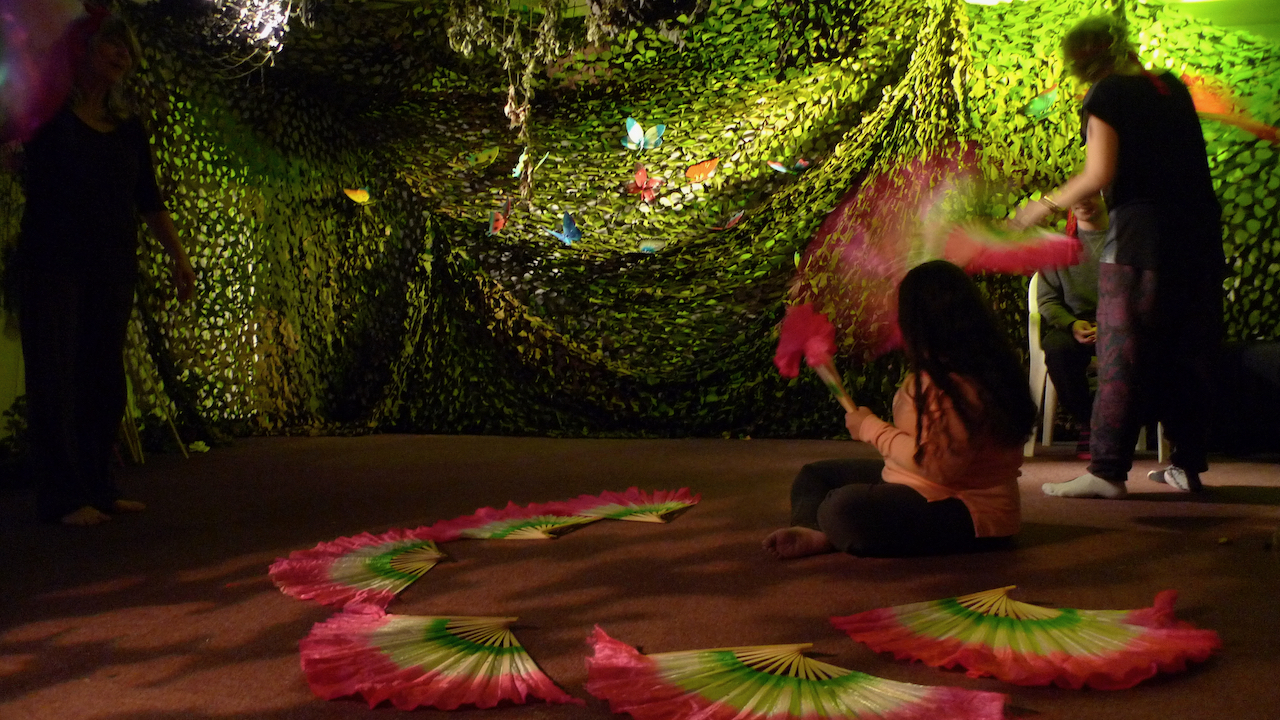
A variety of netting, which can often
be found in local scrap stores, is also useful for completely changing a space
and creating a surface to which other items can be attached.

Long white cloths (1.5 m. x 8m) can be
used to quickly transform a space in many ways: above to make sky/roof, on
floor to denote a certain area, create a particular surface, or around room as
tent, sails, screens etc.
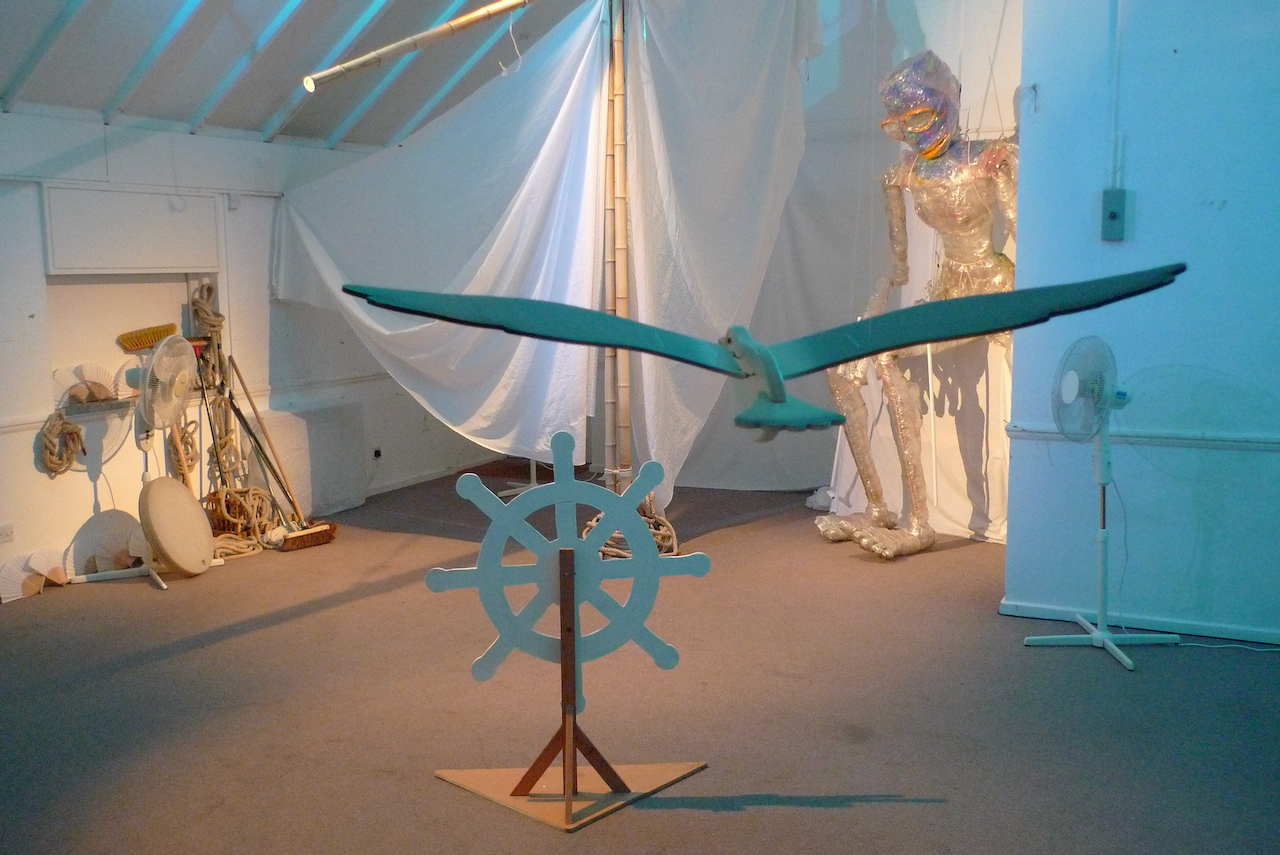
They can be lit with different colours and take projections beautifully.
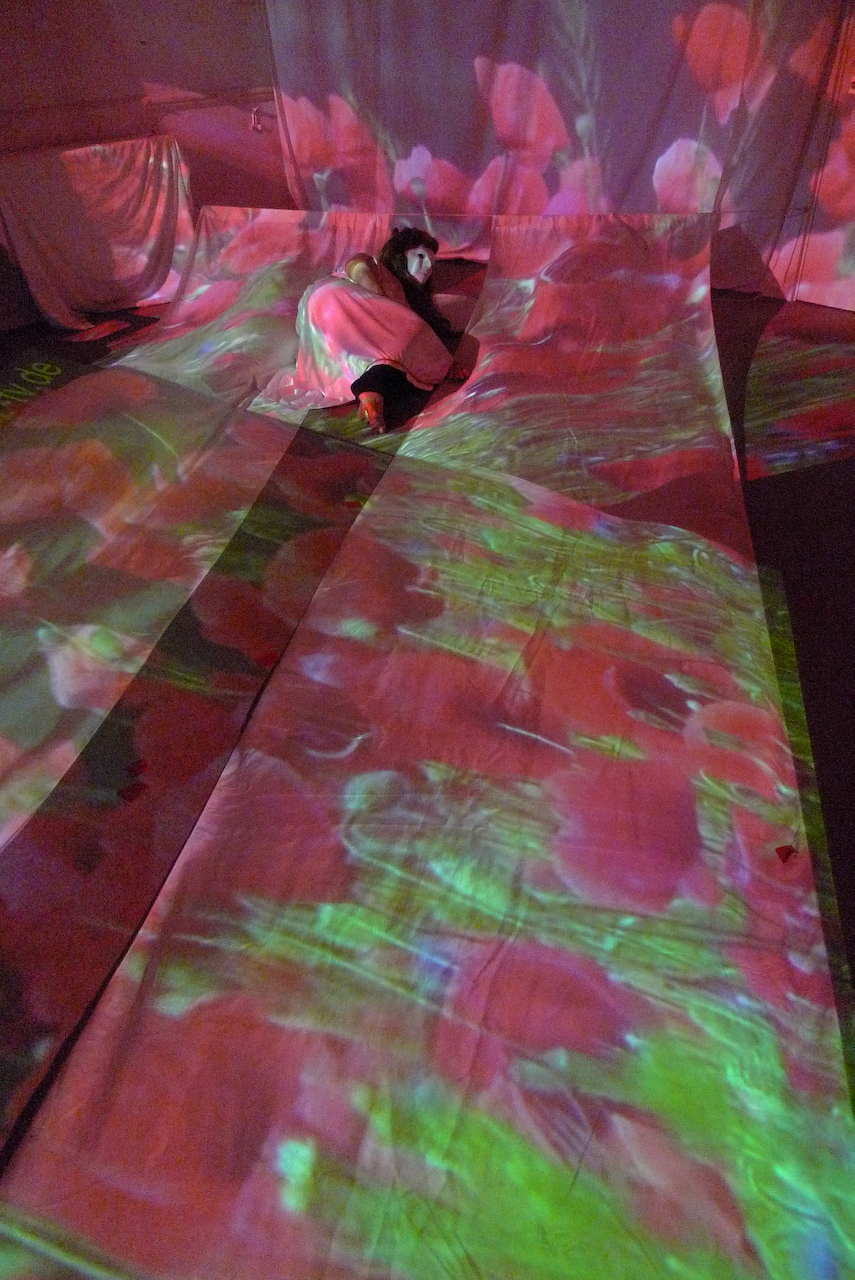
A simple rectangular screen made with
ply and white cloth can be used in a variety of ways – dividing space, shadow
work, projections, as part of another structure.

Withy screens can be used as a base for weaving ivy, ribbons or other materials through to create separate areas.
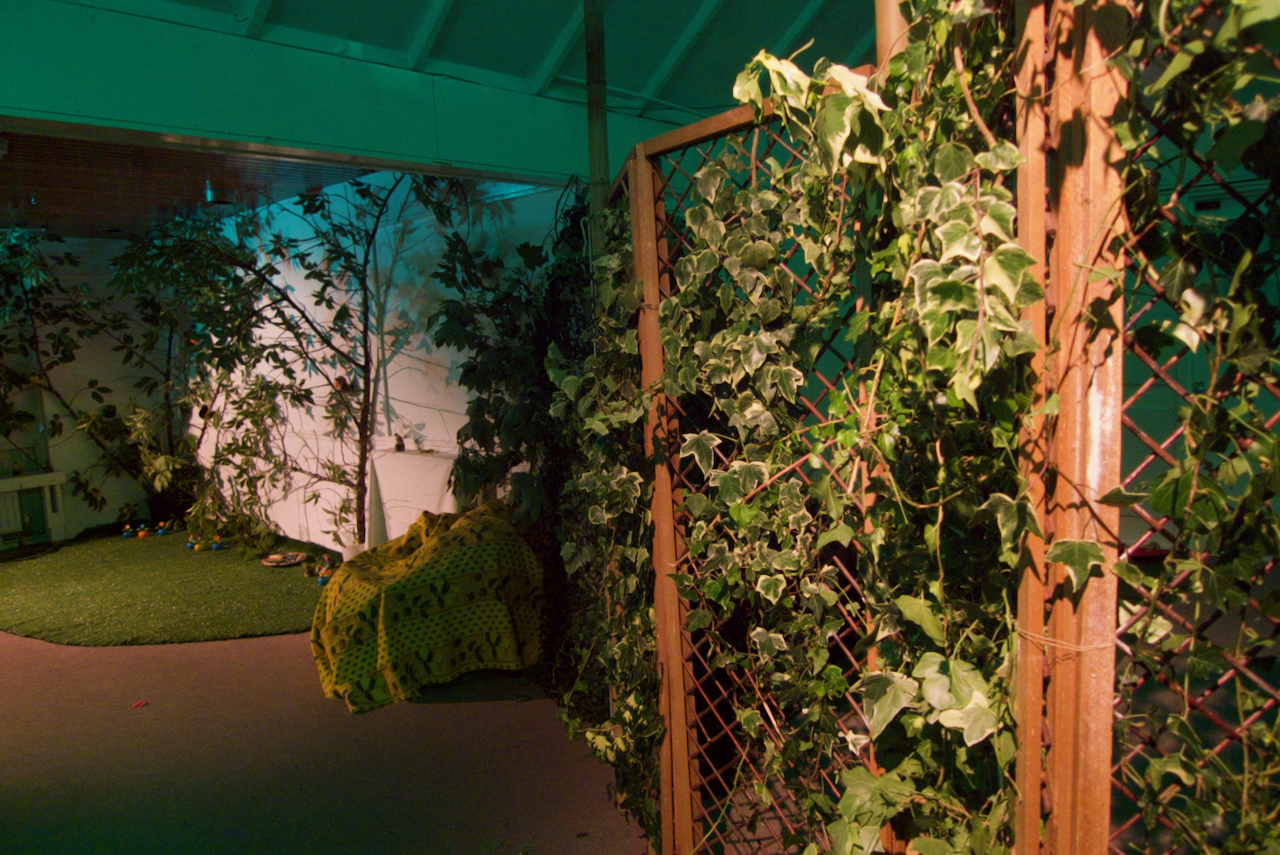
Stretch wrap can have a number of uses
– smaller props, screens, light catching source or can be layered on top of
itself to make large areas of sparkly translucent flooring, wall coverings i.e.
watery effect.
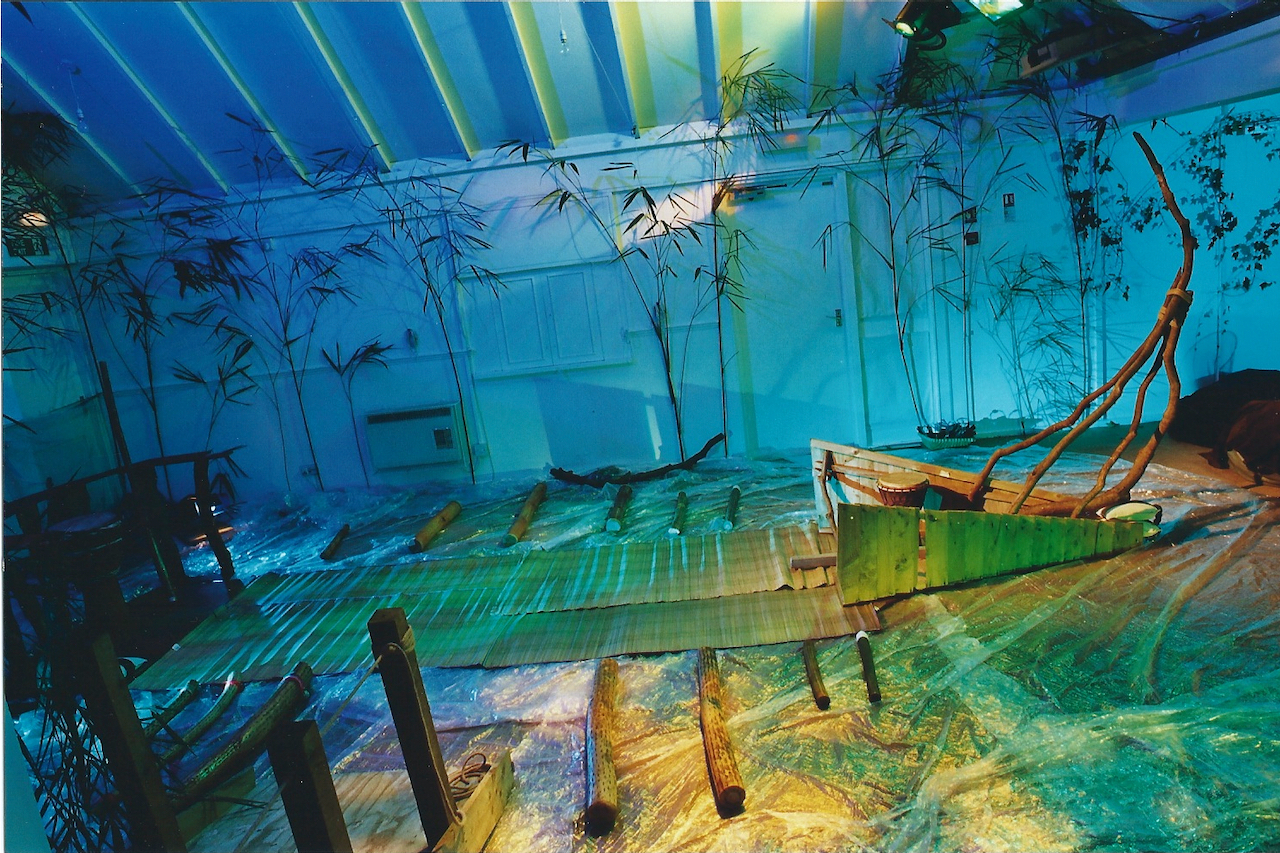
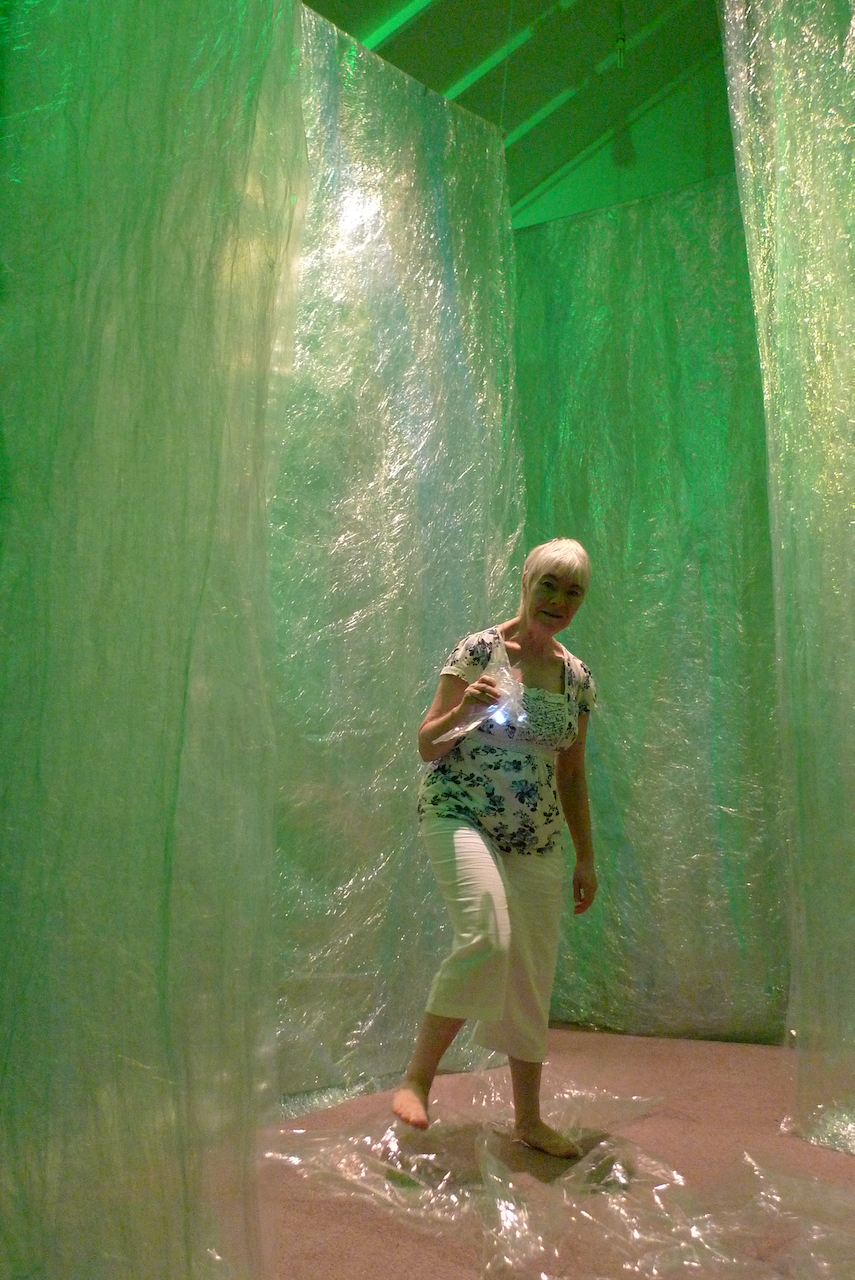
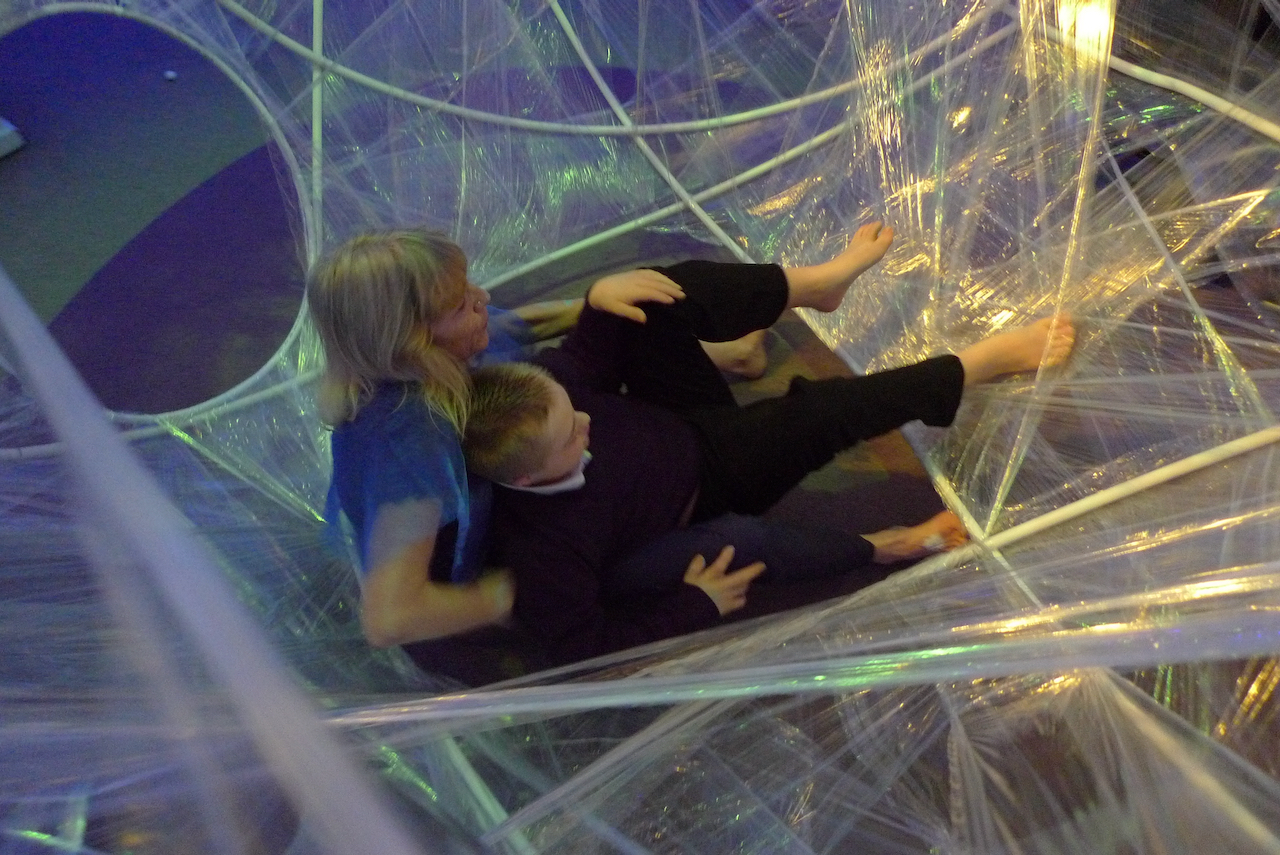
Large amounts of sand (contained on a
cloth/tarp) can create a beach, a desert, a riverbed. Recommend storing in a
wheelie bin as this makes clearing up, moving and storage easier.

Long carpet tubes, cut to different
lengths make excellent instruments (when end ‘batted’ with flip flops), are
visually stunning when used to create structures and can be used to create
giant puppets too.
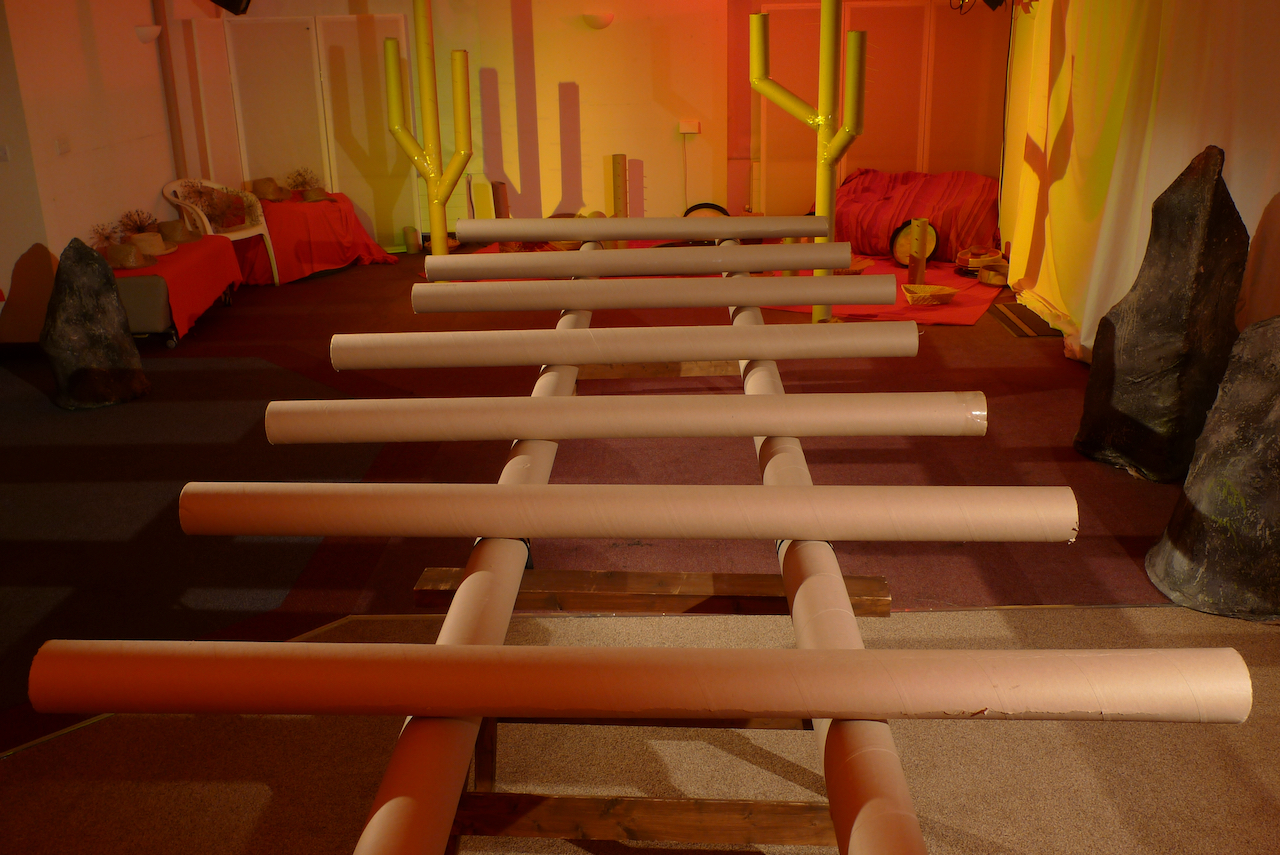
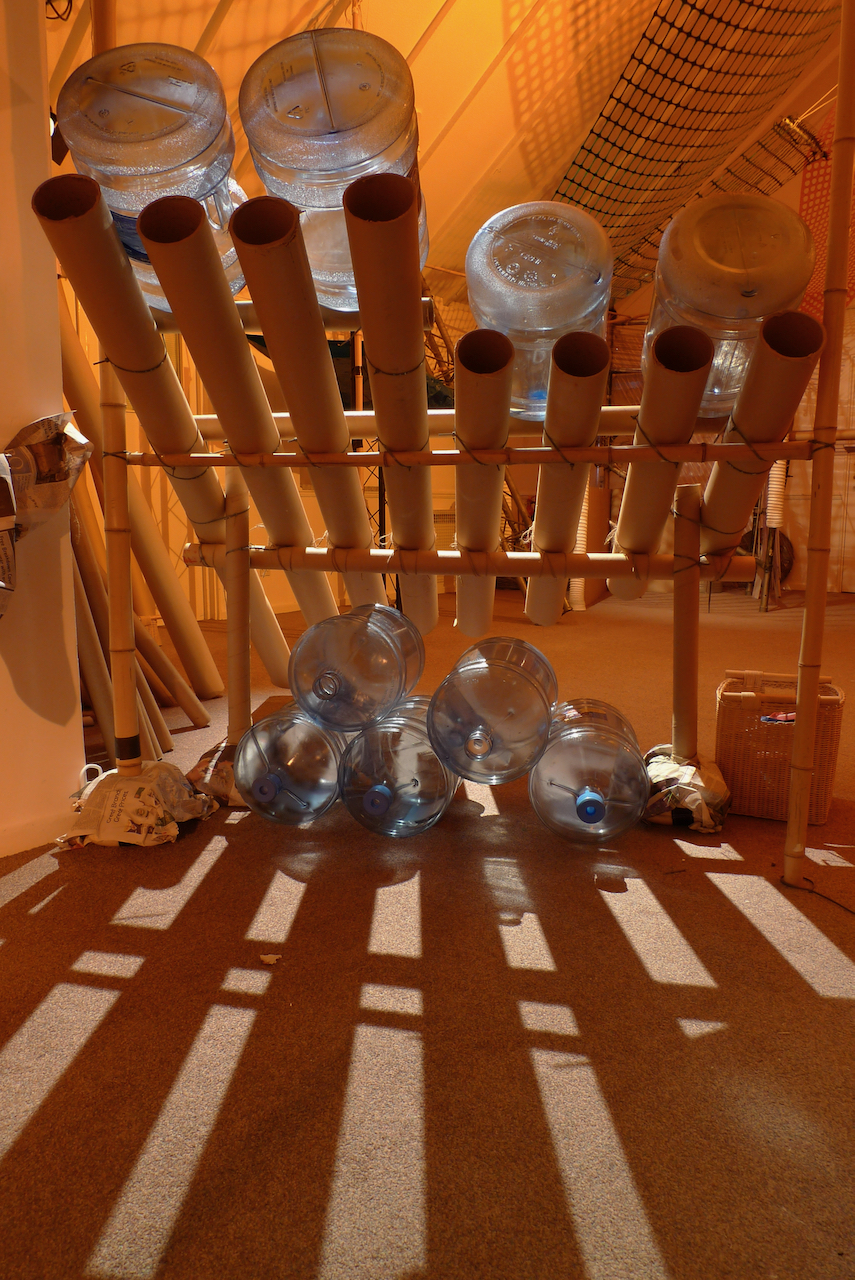

Space blankets can be used to dress a
space, as well
as making excellent props with good visual, sound and textural qualities.
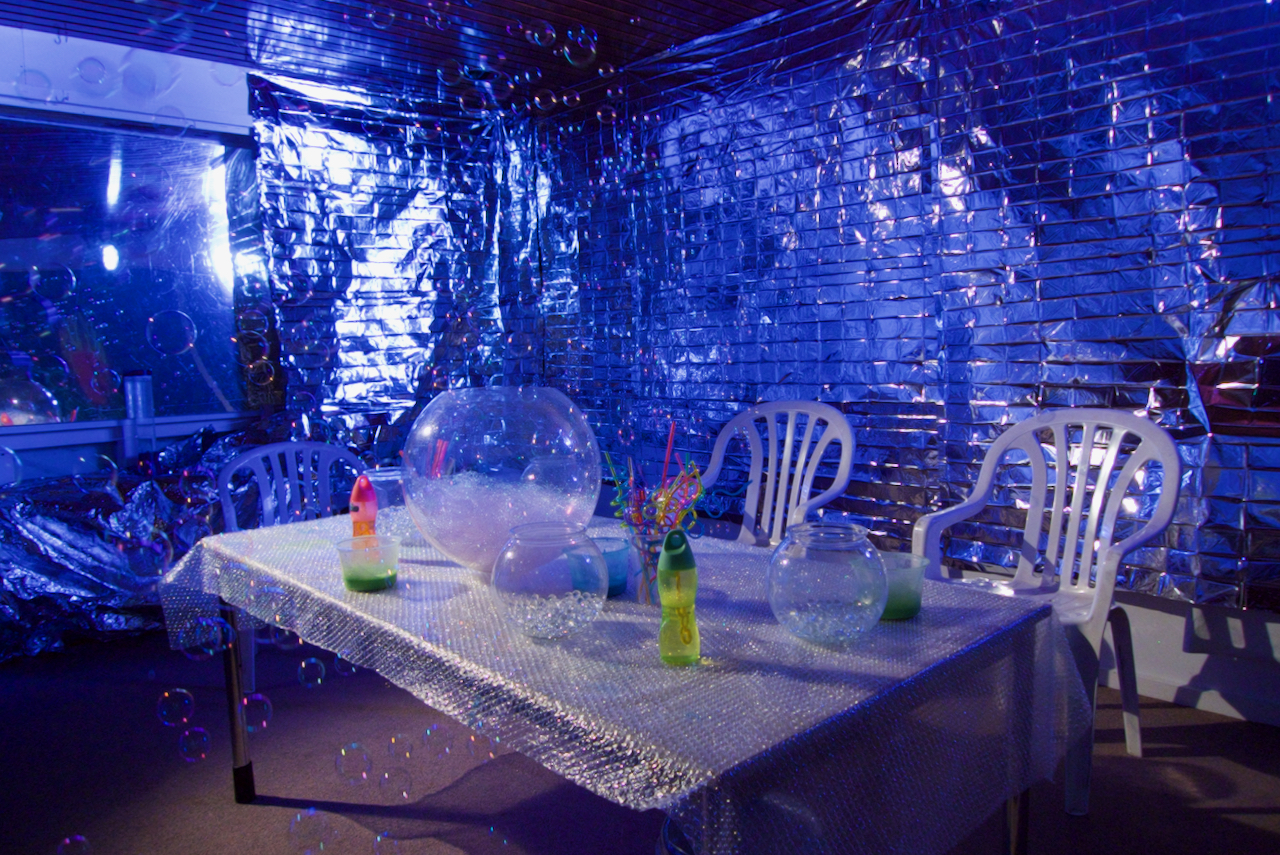
Large branches which simulate trees can
be used to create a forest or woodland glade in your space. These provide places to attach a variety of accessories
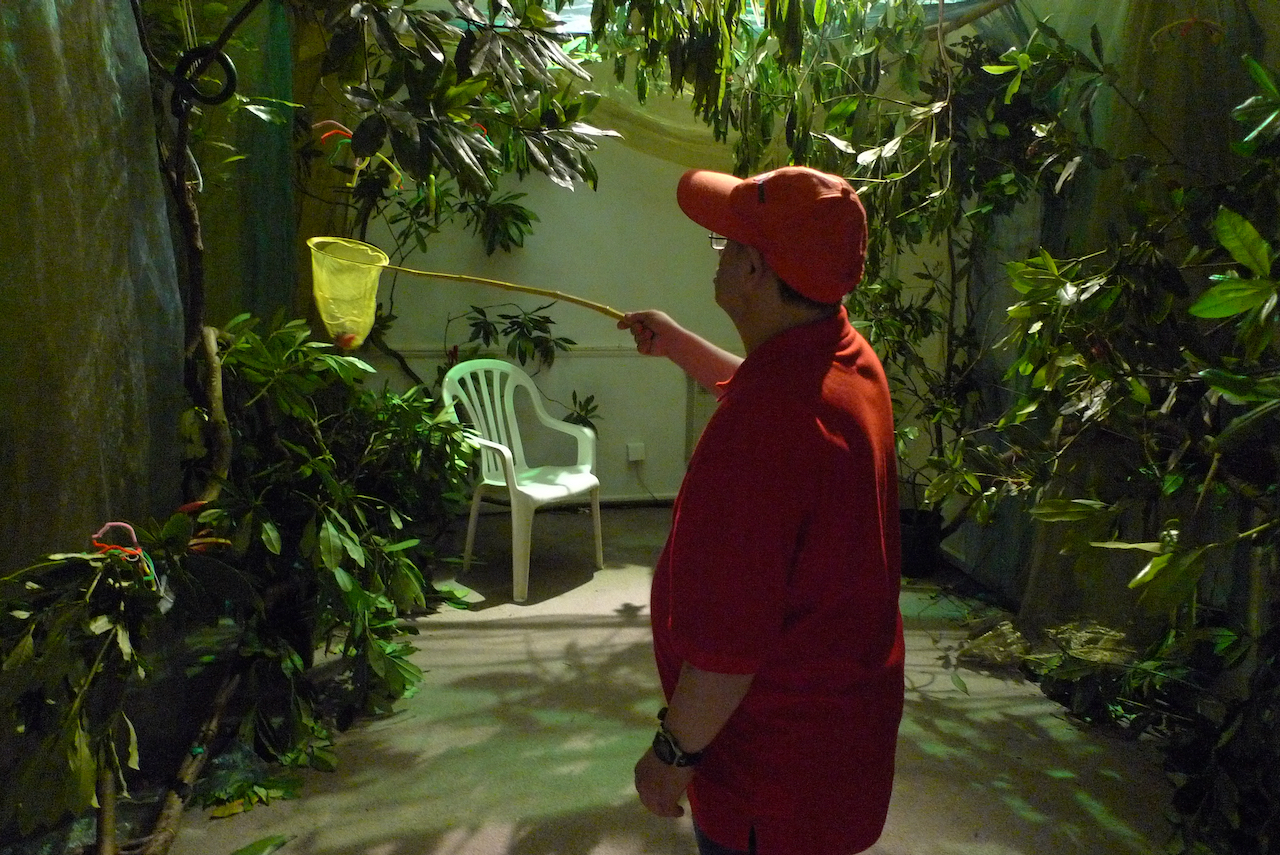
Long pieces of curvy laurel can be used to create a variety of environments. Suggest, once collected, keeping and re-using again and again.
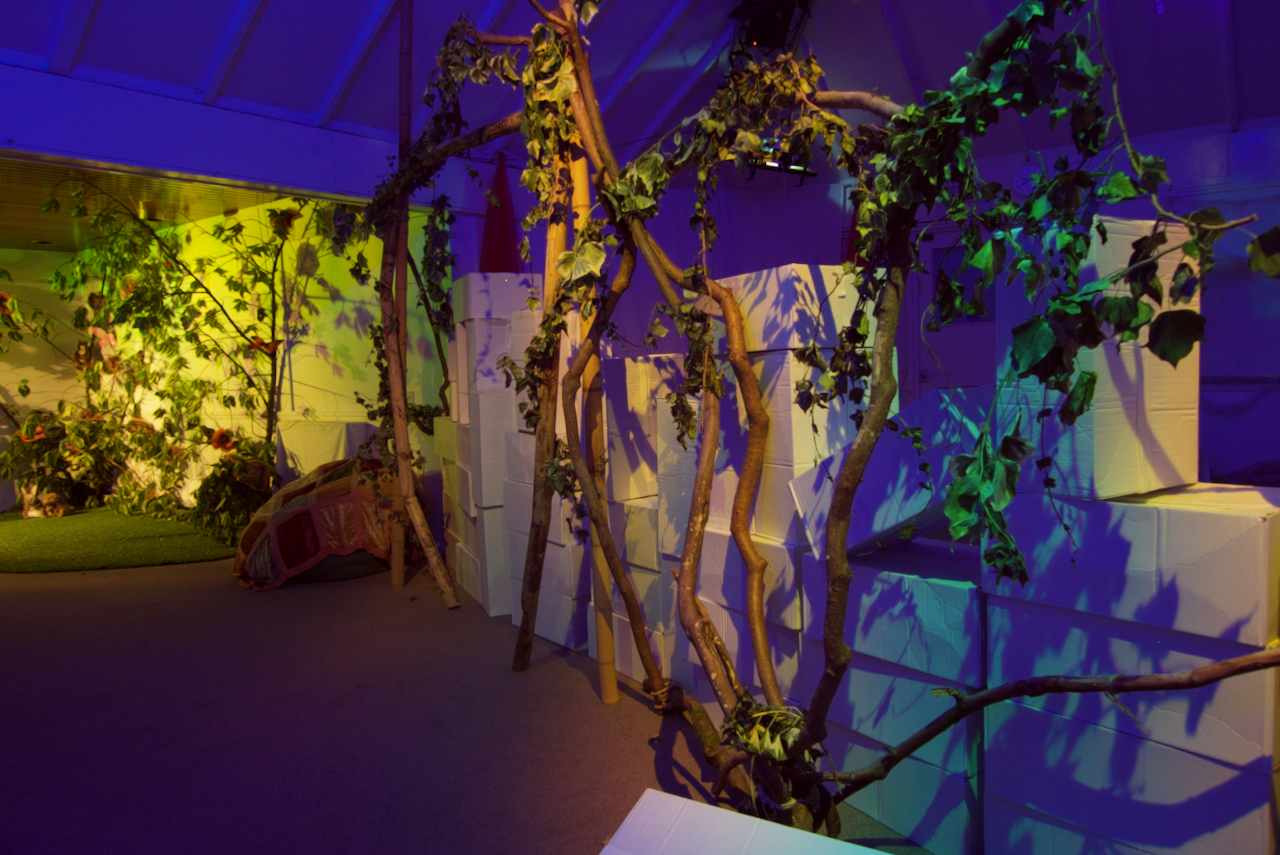
Large safety mirror – good
for focusing participants on selves. Can also be cut into smaller mobile
mirrors with 'snips'.
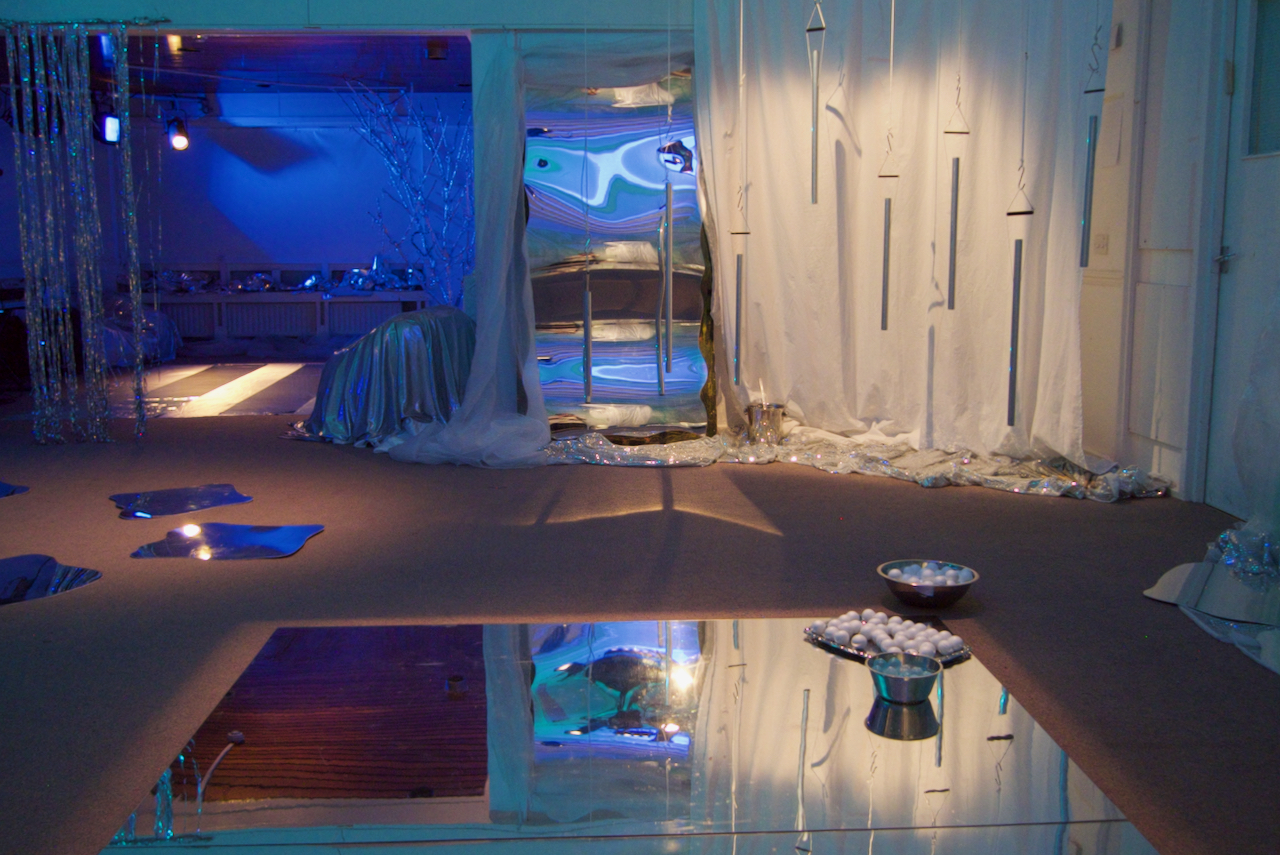
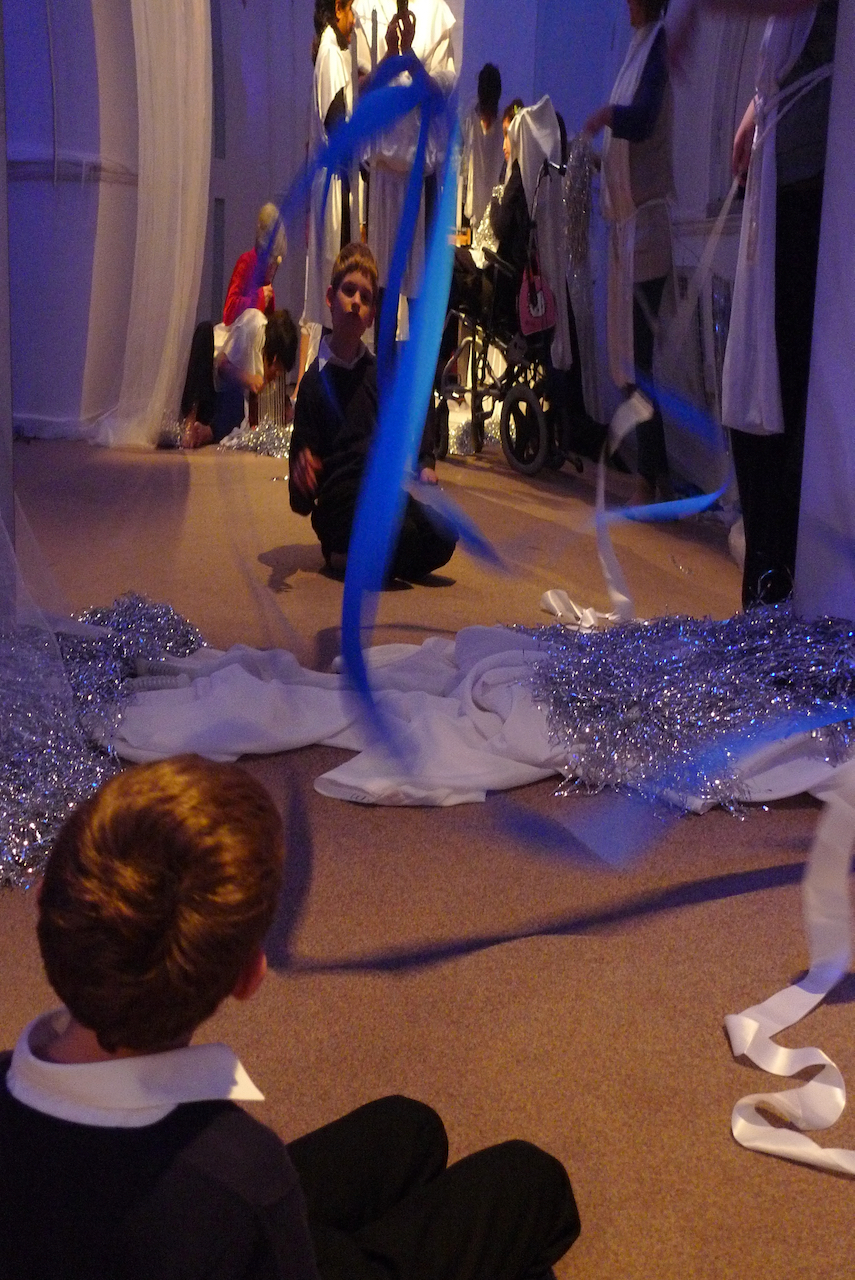
A cheap mosquito net makes an instant,
easily mobile ‘dwelling’ and can also be used to contain specific props.
